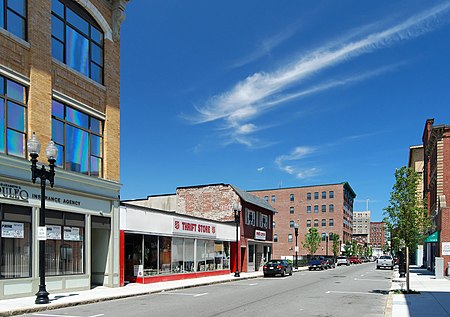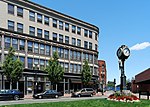Munroe Street Historic District
Historic districts in Essex County, MassachusettsHistoric districts on the National Register of Historic Places in MassachusettsNRHP infobox with nocatNational Register of Historic Places in Lynn, MassachusettsUse mdy dates from August 2023

The Munroe Street Historic District encompasses some of the few commercial buildings to survive in downtown Lynn, Massachusetts from the mid 19th century. The district includes properties on Munroe Street between Market and Washington Streets, which was spared by the 1889 fire that destroyed much of Lynn's downtown area. It was listed on the National Register of Historic Places in 1996.
Excerpt from the Wikipedia article Munroe Street Historic District (License: CC BY-SA 3.0, Authors, Images).Munroe Street Historic District
Oxford Street, Lynn
Geographical coordinates (GPS) Address Nearby Places Show on map
Geographical coordinates (GPS)
| Latitude | Longitude |
|---|---|
| N 42.462777777778 ° | E -70.948055555556 ° |
Address
Oxford St @ Market St
Oxford Street
01903 Lynn
Massachusetts, United States
Open on Google Maps









